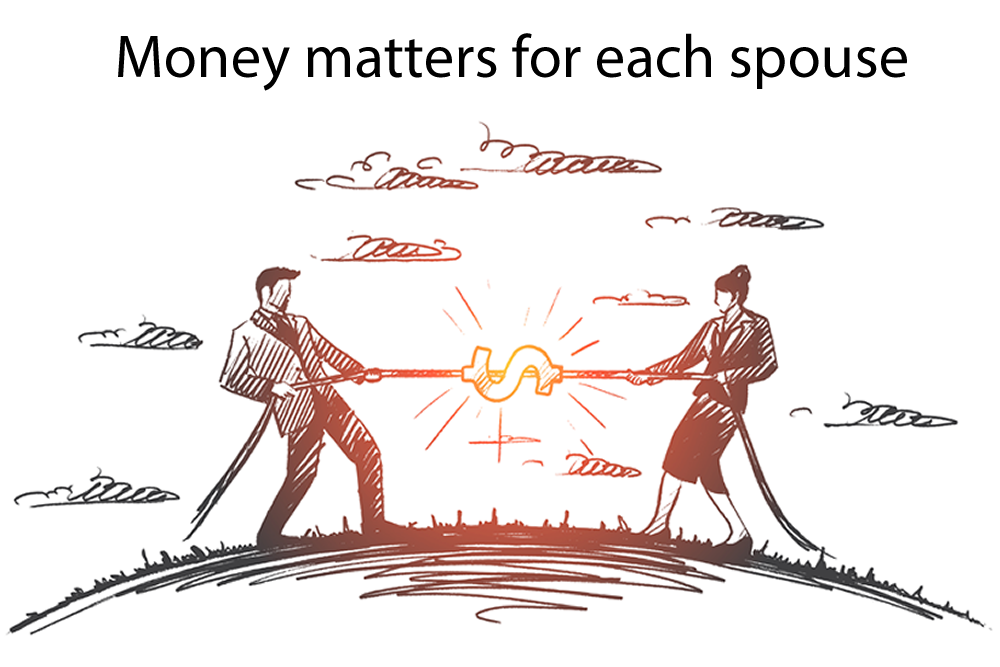Divorce often has devastating effects on a family, both emotionally and financially. While women generally suffer more financial difficulties after a divorce, men also find themselves in a challenging position. According to the U.S. General Accounting Office, women’s income fell by average of 41 percent after divorce, versus 23 percent for males.
Experts say the notion that men are better off financially after a divorce is a myth. Several studies indicate divorced spouses would each require a 30 percent increase in income to maintain their married standard of living. Research from Utah State University found divorced men experience a decrease of 10 percent to 40 percent in their living standard. The financial setback is greater among men who provided less than 80 percent of the family’s income – a common situation when both spouses work.
The greatest challenges divorcing men often face are rebuilding their personal finances and getting retirement savings back on track, according to Certified Divorce Financial Analyst® James Sonneborn CFP®, partner and wealth advisor at RegentAtlantic in Morristown, New Jersey. As a CDFA®, he provides financial planning for individuals and couples going through a dissolution of marriage, as well as wealth management, retirement planning, and estate services for all clients.
“Divorce means a major shift in finances – more than most other situations one may come across in life, so it can take years to recover,” Sonneborn said. “Married couples become accustomed to a certain lifestyle that may not be attainable after divorce. Many are challenged to reprioritize spending and make other changes to maintain some semblance of their desired lifestyle.”
The divorce rate among Americans over 50 years old has been rising since the 1990s. The later in life couples split-up, Sonneborn said, the more difficult the financial challenges become.
“You have fewer years to rebuild your balance sheet and retirement savings. And, when children are involved, men typically spend more money along with emotions related to being removed from the family,” he said.
In recent years, financial advisors have relied on a more collaborative approach on divorce as opposed to an adversarial approach. The former brings both parties and their advisors to the negotiating table to find solutions for the family’s goals. Sonneborn has served as a neutral party in some of those sessions, but for most clients, he represents one spouse.
“You think about helping individuals who are probably in the most emotionally wrenching process in their life,” he added.  With divorcing clients, Sonneborn focuses on planning for specific financial issues they will face. Much of that work involves dividing marital assets. He helps clients identify their assets – such as investments, mortgages, and student loans – update estate plans, and make sure alimony obligations can be met.
With divorcing clients, Sonneborn focuses on planning for specific financial issues they will face. Much of that work involves dividing marital assets. He helps clients identify their assets – such as investments, mortgages, and student loans – update estate plans, and make sure alimony obligations can be met.
“It’s creating a knowledge base that helps ensure our clients receive their equitable share within the division of assets,” he said. "That’s really the core of financial planning, but we have a laser focus on what all that means when we’re going through a divorce, and on how to help plan for a very different reality coming out of it.”
One of Sonneborn’s core values is educating clients to make them comfortable with the language of finance. In a divorce, his educational focus is on helping these clients understand their assets.
“Not everybody is always in tune with the financial side of the family,” he said, adding that he ensures clients understand their personal balance sheet and anticipate their post-divorce lifestyle.
“I see myself as a financial educator as well as a coach, with the primary goal of providing the knowledge, confidence, and support to make what will definitely be one of the biggest financial decisions of their lives,” he continued. “If they don’t get it right, they don’t get a do-over.”
When choosing a divorce financial planner, Sonneborn suggests people should determine how much experience the planner has. What services do they offer? What aspects of the divorce will they cover? How is compensation handled: flat fee, hourly rate, or through future product sales? Is the advisor familiar with the legal framework? Is divorce an important focus for their business?
The economic downturn of 2020 added more complexity for clients who are in the midst of a divorce. Assets are typically valued as of the divorce filing date which for many happened before the stock market collapse. The final disposition of assets happens on the final court date, when values are probably lower.
“That whole factor is coming into negotiations during the financial crisis,” Sonneborn said.
Since the stock market collapse, Sonneborn said he has spent much of his time reaching out to clients of all types about emerging financial planning opportunities. For some, the IRS waiver of requirement minimum distributions and lower asset values may offer opportunities to convert some IRA assets to Roths. Low interest rates can bring new wealth transfer strategies, while estate planning can benefit while current federal tax regulations are in place.
“We’re in a situation where we just got handled a bunch of lemons,” Sonneborn added. “What lemonade can we make of it?” Clients can work with advisors to rebalance portfolios or address underperforming assets. “There are always things that can be done in a potentially bad environment like this.”
For more information on RegentAtlantic, visit regentatlantic.com






